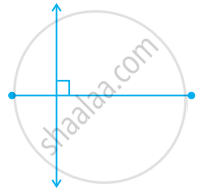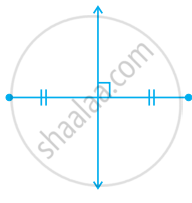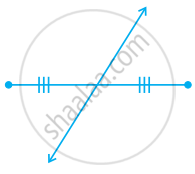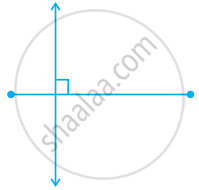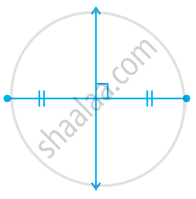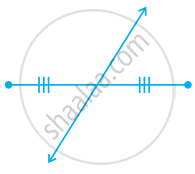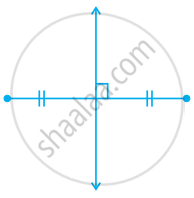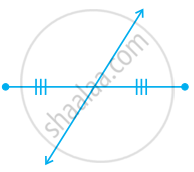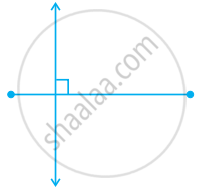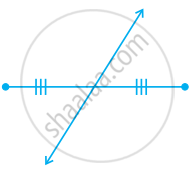Advertisements
Chapters
![NCERT Exemplar solutions for Mathematics [English] Class 6 chapter 2 - Geometry NCERT Exemplar solutions for Mathematics [English] Class 6 chapter 2 - Geometry - Shaalaa.com](/images/mathematics-english-class-6_6:5f2b1b2038084cf381bfa42c826a928c.jpg)
Advertisements
Solutions for Chapter 2: Geometry
Below listed, you can find solutions for Chapter 2 of CBSE NCERT Exemplar for Mathematics [English] Class 6.
NCERT Exemplar solutions for Mathematics [English] Class 6 2 Geometry Exercise [Pages 23 - 37]
Choose the correct alternative:
Number of lines passing through five points such that no three of them are collinear is ______.
10
5
20
8
The number of diagonals in a septagon is ______.
21
42
7
14
Number of line segments in Figure is ______.
5
10
15
20
Measures of the two angles between hour and minute hands of a clock at 9 O’ clock are ______.
60°, 300°
270°, 90°
75°, 285°
30°, 330°
If a bicycle wheel has 48 spokes, then the angle between a pair of two consecutive spokes is ______.
`(5 1/2)`
`(7 1/2)`
`(2/11)`
`(2/15)`
In figure, ∠XYZ cannot be written as ______.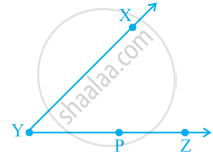
∠Y
∠ZXY
∠ZYX
∠XYP
In figure, if point A is shifted to point B along the ray PX such that PB = 2PA, then the measure of ∠BPY is ______.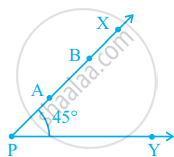
Greater than 45°
45°
Less than 45°
90°
The number of angles in figure is ______.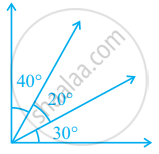
3
4
5
6
The number of obtuse angles in figure is ______.
2
3
4
5
The number of triangles in figure is ______.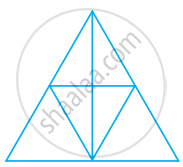
10
12
13
14
If the sum of two angles is greater than 180°, then which of the following is not possible for the two angles?
One obtuse angle and one acute angle
One reflex angle and one acute angle
Two obtuse angles
Two right angles
If the sum of two angles is equal to an obtuse angle, then which of the following is not possible?
One obtuse angle and one acute angle.
One right angle and one acute angle
Two acute angles
Two right angles
A polygon has prime number of sides. Its number of sides is equal to the sum of the two least consecutive primes. The number of diagonals of the polygon is ______.
4
5
7
10
In figure, AB = BC and AD = BD = DC. The number of isosceles triangles in the figure is ______.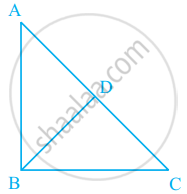
1
2
3
4
In figure, ∠BAC = 90° and AD ⊥ BC. The number of right triangles in the figure is ______.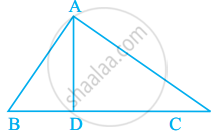
1
2
3
4
In figure, PQ ⊥ RQ, PQ = 5 cm and QR = 5 cm. Then ∆PQR is ______.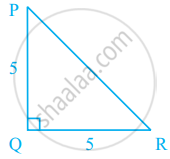
A right triangle but not isosceles
An isosceles right triangle
Isosceles but not a right triangle
Neither isosceles nor right triangle
Fill in the blank:
An angle greater than 180° and less than a complete angle is called ______.
The number of diagonals in a hexagon is ______.
A pair of opposite sides of a trapezium are ______.
In figure, points lying in the interior of the triangle PQR are ______, that in the exterior are ______ and that on the triangle itself are ______.
In figure, points A, B, C, D and E are collinear such that AB = BC = CD = DE. Then 
AD = AB + ______
In figure, points A, B, C, D and E are collinear such that AB = BC = CD = DE. Then 
AD = AC + ______
In figure, points A, B, C, D and E are collinear such that AB = BC = CD = DE. Then 
Mid point of AE is ______
In figure, points A, B, C, D and E are collinear such that AB = BC = CD = DE. Then 
Midpoint of CE is ______
In figure, points A, B, C, D and E are collinear such that AB = BC = CD = DE. Then 
AE = ______ × AB.
In the given figure.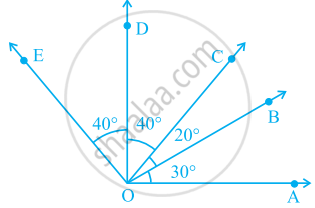
∠AOD is a/an ____ angle
In the given figure.
∠COA is a/an ______ angle
In the given figure.
∠AOE is a/an ______ angle
The number of triangles in figure is ______. Their names are ______.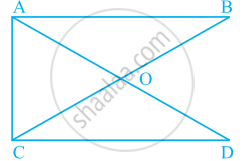
Number of angles less than 180° in figure is ______ and their names are ______.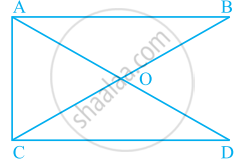
The number of straight angles in figure is ______.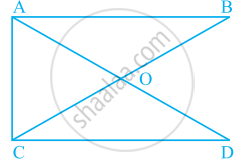
The number of right angles in a straight angle is ______ and that in a complete angle is ______.
The number of common points in the two angles marked in figure is ______.
The number of common points in the two angles marked in figure is ______.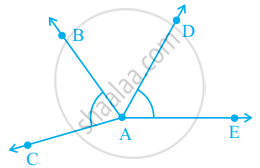
The number of common points in the two angles marked in figure ______.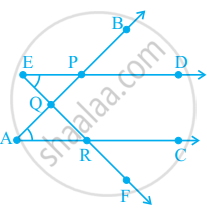
The number of common points in the two angles marked in figure is ______.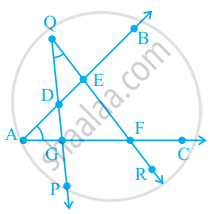
The common part between the two angles BAC and DAB in figure is ______.
State whether the following statement is True or False:
A horizontal line and a vertical line always intersect at right angles.
True
False
If the arms of an angle on the paper are increased, the angle increases.
True
False
If the arms of an angle on the paper are decreased, the angle decreases.
True
False
If line PQ || line m, then line segment PQ || m.
True
False
Two parallel lines meet each other at some point.
True
False
Measures of ∠ABC and ∠CBA in figure are the same.
True
False
Two line segments may intersect at two points.
True
False
Many lines can pass through two given points.
True
False
Only one line can pass through a given point.
True
False
Two angles can have exactly five points in common.
True
False
Name all the line segments in figure
Name the line segments shown in figure.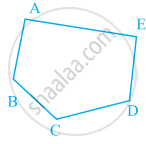
State the midpoints of all the sides of figure.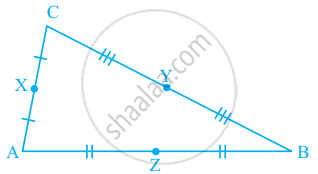
Name the vertices and the line segments in figure.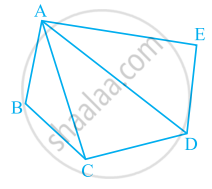
Write down fifteen angles (less than 180°) involved in figure.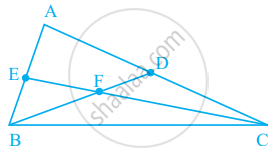
Name the following angles of figure, using three-letter: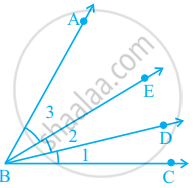
∠1
Name the following angles of figure, using three-letter: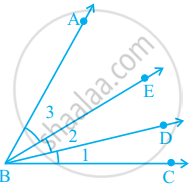
∠2
Name the following angles of figure, using three-letter: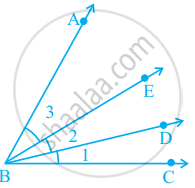
∠3
Name the following angles of figure, using three-letter: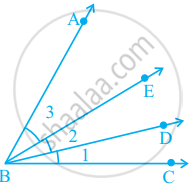
∠1 + ∠2
Name the following angles of figure, using three-letter: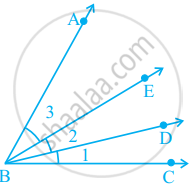
∠2 + ∠3
Name the following angles of figure, using three-letter:
∠1 + ∠2 + ∠3
Name the following angles of figure, using three-letter: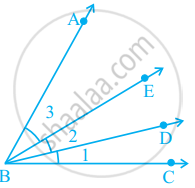
∠CBA – ∠1
Name the points and then the line segments in the following figure: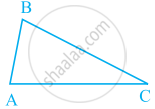
Name the points and then the line segments in the following figure: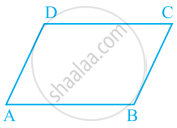
Name the points and then the line segments in the following figure: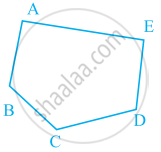
Name the points and then the line segments in the following figure: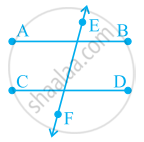
Which points in figure, appear to be mid-points of the line segments? When you locate a mid-point, name the two equal line segments formed by it.
Which points in figure, appear to be mid-points of the line segments? When you locate a mid-point, name the two equal line segments formed by it.
Which points in figure, appear to be mid-points of the line segments? When you locate a mid-point, name the two equal line segments formed by it.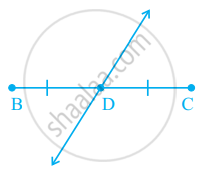
Is it possible for the same line segment to have two different lengths?
Is it possible for the same angle to have two different measures?
Will the measure of ∠ABC and of ∠CBD make measure of ∠ABD in figure?
Will the lengths of line segment AB and line segment BC make the length of line segment AC in figure?
Draw two acute angles and one obtuse angle without using a protractor. Estimate the measures of the angles. Measure them with the help of a protractor and see how much accurate is your estimate
Look at a given figure. Mark a point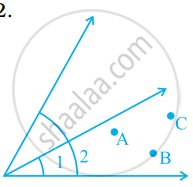
(a) A which is in the interior of both ∠1 and ∠2.
(b) B which is in the interior of only ∠1.
(c) Point C in the interior of ∠1.
Now, state whether points B and C lie in the interior of ∠2 also.
Find out the incorrect statement, if any, in the following:
An angle is formed when we have
(a) two rays with a common end-point
(b) two line segments with a common end-point
(c) a ray and a line segment with a common end-point
In which of the following figures, perpendicular bisector is shown?
In which of the following figures, bisector is shown?
In which of the following figures, only bisector is shown?
In which of the following figures, only perpendicular is shown?
What is common in the following figure?
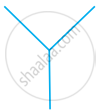 |
 |
| (i) | (ii) |
Is figure (i) that of triangle? if not, why?
If two rays intersect, will their point of intersection be the vertex of an angle of which the rays are the two sides?
In given figure, name any four angles that appear to be acute angles.
In given figure, name any two angles that appear to be obtuse angles.
In given figure, is AC + CB = AB ?
In given figure, is AB + AC = CB?
In given figure, is AB + BC = CA?
In given figure, What is AE + EC?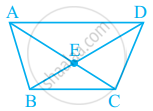
In given figure, What is AC – EC?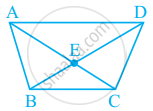
In given figure, What is BD – BE?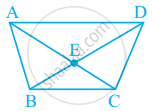
In given figure, What is BD – DE?
Using the information given, name the right angles in part of figure:
BA ⊥BD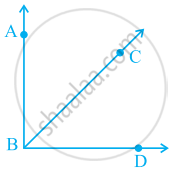
Using the information given, name the right angles in part of figure:
RT ⊥ ST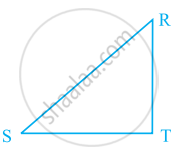
Using the information given, name the right angles in part of figure:
AC ⊥ BD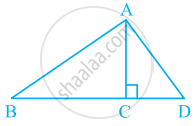
Using the information given, name the right angles in part of figure:
RS ⊥ RW
Using the information given, name the right angles in part of figure:
AC ⊥ BD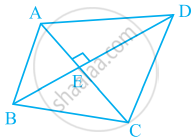
Using the information given, name the right angles in part of figure:
AE ⊥ CE
Using the information given, name the right angles in part of figure:
AC ⊥ CD
Using the information given, name the right angles in part of figure:
OP ⊥ AB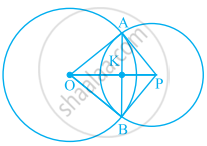
What conclusion can be drawn from part of given figure, if DB is the bisector of ∠ADC?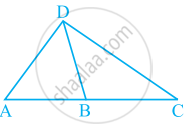
What conclusion can be drawn from part of given figure, if BD bisects ∠ABC?
What conclusion can be drawn from part of given figure, if DC is the bisector of ∠ADB, CA ⊥ DA and CB ⊥ DB?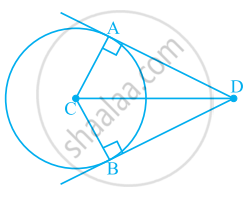
An angle is said to be trisected, if it is divided into three equal parts. If in the given figure, ∠BAC = ∠CAD = ∠DAE, how many trisectors are there for ∠BAE?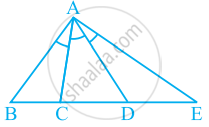
How many points are marked in the figure?
How many line segments are there in given figure?
In the given, how many points are marked? Name them.
How many line segments are there in given figure? Name them.
In the given figure, how many points are marked? Name them.
In given figure how many line segments are there? Name them.
In given figure, how many points are marked? Name them.
In given figure how many line segments are there? Name them.
In the given figure, O is the centre of the circle. Name all chords of the circle.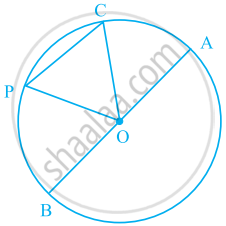
In the given figure, O is the centre of the circle. Name all radii of the circle.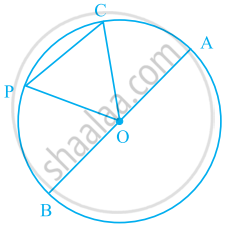
In the given figure, O is the centre of the circle. Name a chord, which is not the diameter of the circle.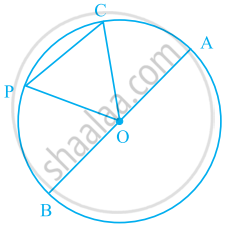
In the given figure, O is the centre of the circle. Shade sectors OAC and OPB.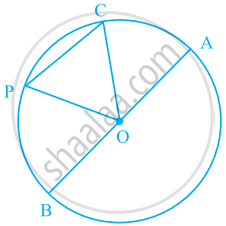
In the given figure, O is the centre of the circle. Shade the smaller segment of the circle formed by CP.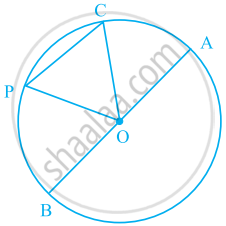
Can we have two acute angles whose sum is an acute angle? Why or why not?
Can we have two acute angles whose sum is a right angle? Why or why not?
Can we have two acute angles whose sum is an obtuse angle? Why or why not?
Can we have two acute angles whose sum is a straight angle? Why or why not?
Can we have two acute angles whose sum is a reflex angle? Why or why not?
Can we have two obtuse angles whose sum is an acute angle? Why or why not?
Can we have two obtuse angles whose sum is a complete angle? Why or why not?
Write the name of vertices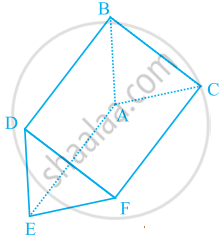
Write the name of edges
Write the name of faces of the prism shown in given figure.
How many edges, faces and vertices are there in a sphere?
Draw all the diagonals of a pentagon ABCDE and name them.
Solutions for 2: Geometry
![NCERT Exemplar solutions for Mathematics [English] Class 6 chapter 2 - Geometry NCERT Exemplar solutions for Mathematics [English] Class 6 chapter 2 - Geometry - Shaalaa.com](/images/mathematics-english-class-6_6:5f2b1b2038084cf381bfa42c826a928c.jpg)
NCERT Exemplar solutions for Mathematics [English] Class 6 chapter 2 - Geometry
Shaalaa.com has the CBSE Mathematics Mathematics [English] Class 6 CBSE solutions in a manner that help students grasp basic concepts better and faster. The detailed, step-by-step solutions will help you understand the concepts better and clarify any confusion. NCERT Exemplar solutions for Mathematics Mathematics [English] Class 6 CBSE 2 (Geometry) include all questions with answers and detailed explanations. This will clear students' doubts about questions and improve their application skills while preparing for board exams.
Further, we at Shaalaa.com provide such solutions so students can prepare for written exams. NCERT Exemplar textbook solutions can be a core help for self-study and provide excellent self-help guidance for students.
Concepts covered in Mathematics [English] Class 6 chapter 2 Geometry are Concept for Basic Geometrical Ideas (2 -d), Concept of Points, Concept of Line, Concept of Line Segment, Concept of Ray, Concept of Intersecting Lines, Introduction to Parallel Lines, Concept of Curves, Different Types of Curves - Closed Curve, Open Curve, Simple Curve., Concept of Angle, Concept of Polygons, Concept of Triangles, Concept of Quadrilaterals, Concept of Circle.
Using NCERT Exemplar Mathematics [English] Class 6 solutions Geometry exercise by students is an easy way to prepare for the exams, as they involve solutions arranged chapter-wise and also page-wise. The questions involved in NCERT Exemplar Solutions are essential questions that can be asked in the final exam. Maximum CBSE Mathematics [English] Class 6 students prefer NCERT Exemplar Textbook Solutions to score more in exams.
Get the free view of Chapter 2, Geometry Mathematics [English] Class 6 additional questions for Mathematics Mathematics [English] Class 6 CBSE, and you can use Shaalaa.com to keep it handy for your exam preparation.
